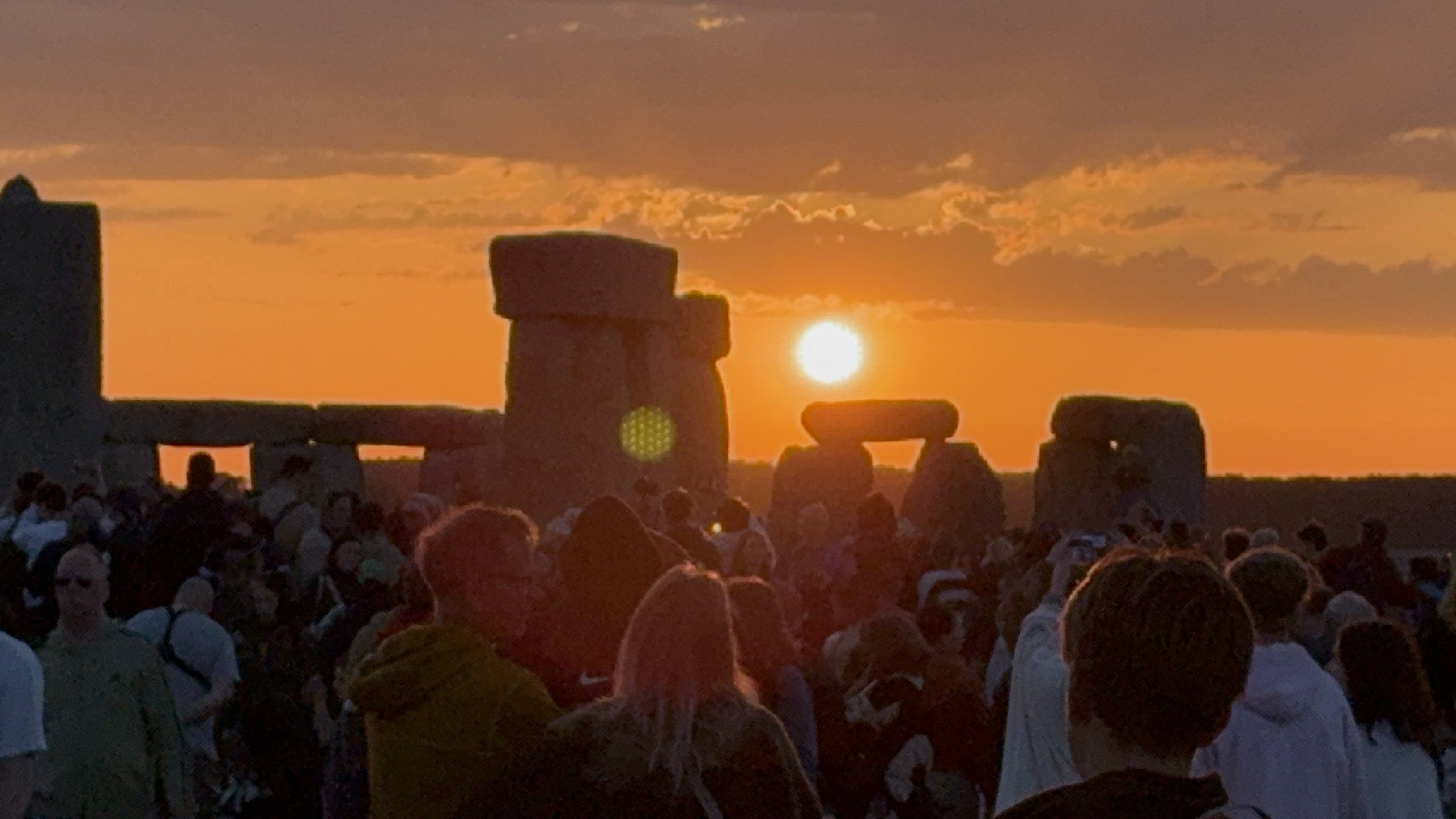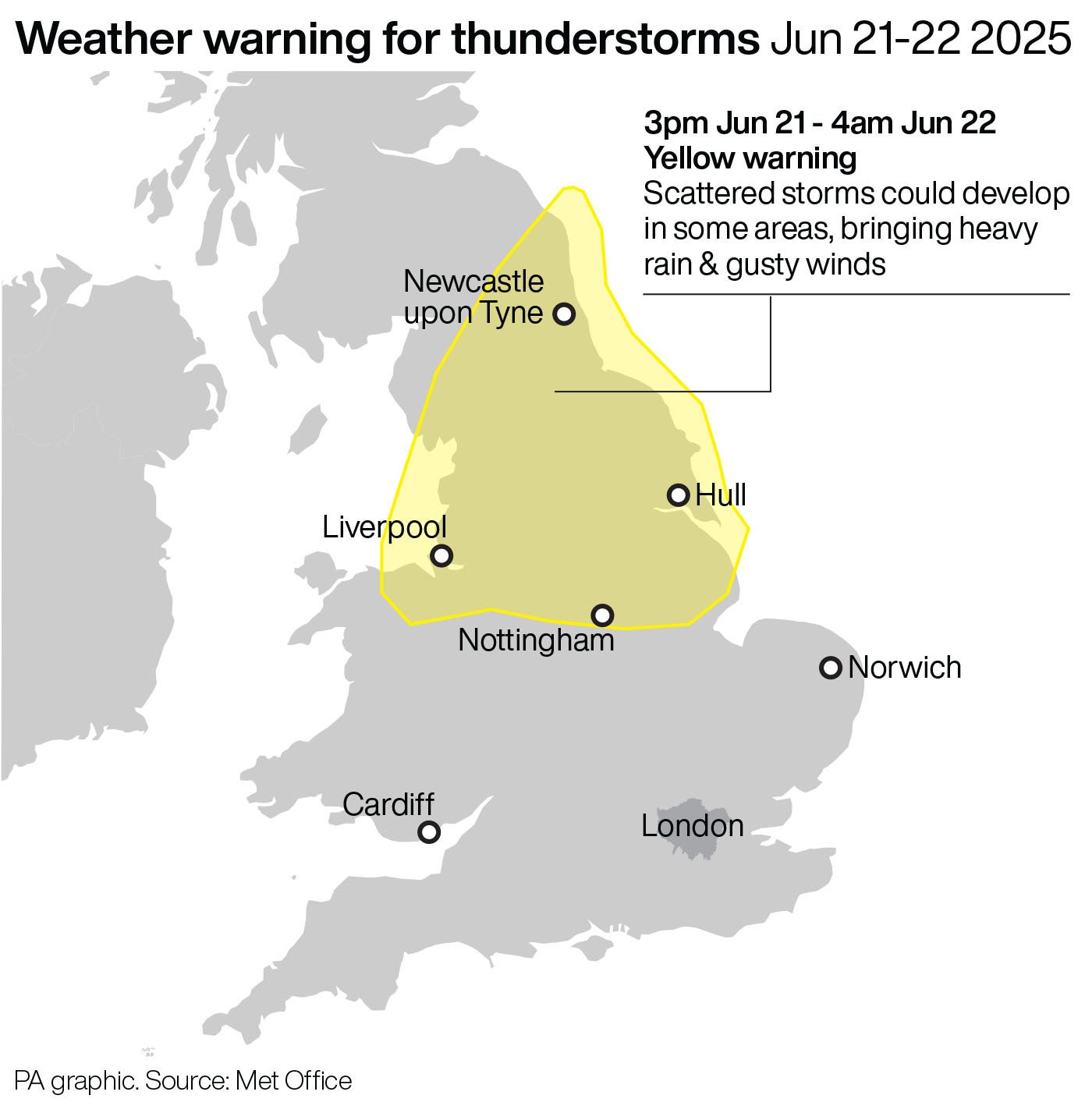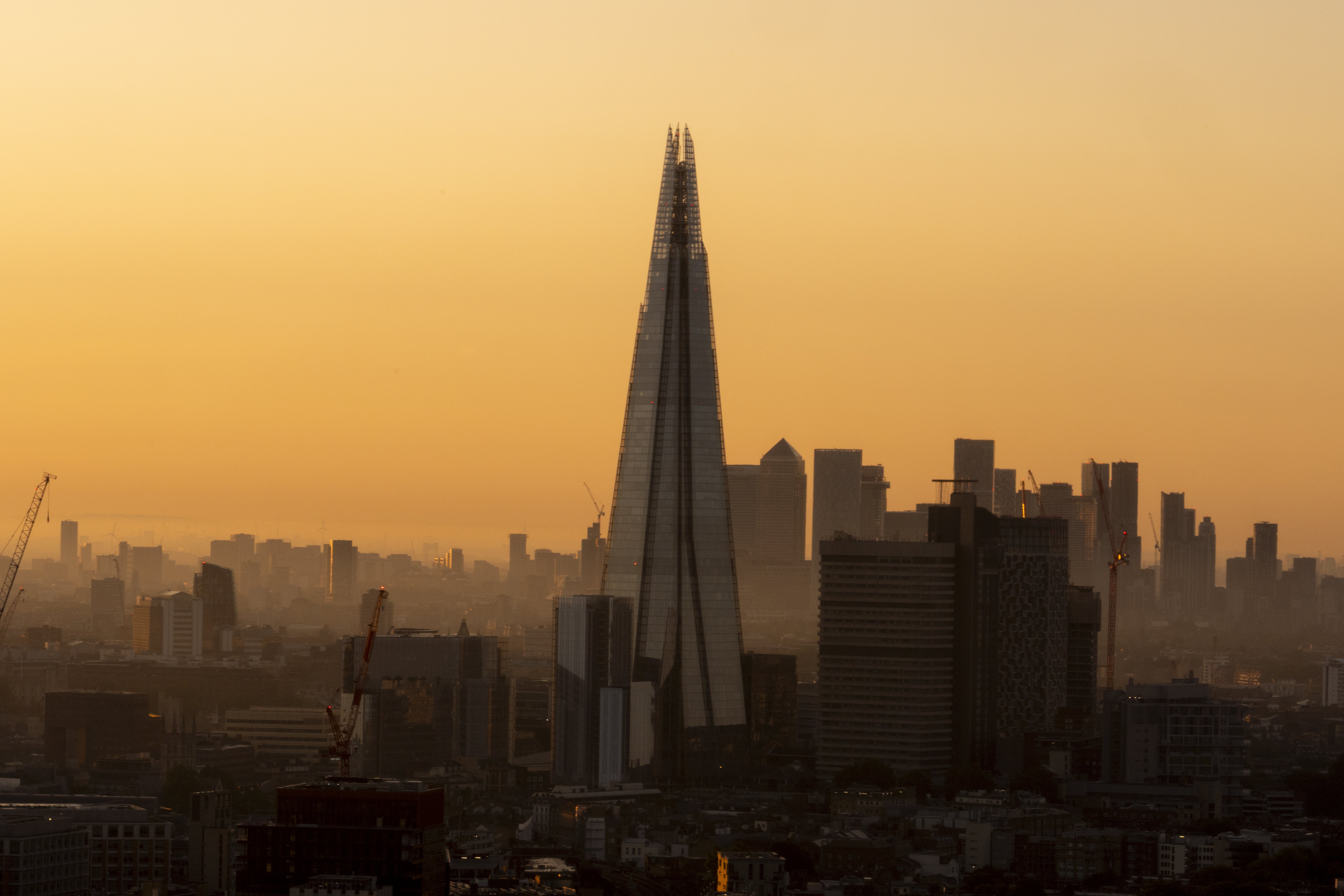
Thousands of people watched the sunrise over Stonehenge to celebrate the summer solstice, signifying the end of spring.
Those who gathered for the spectacle on Saturday at the neolithic monument in Wiltshire braved a warm start to the morning as they marked the year’s longest day.
Temperatures in Salisbury and Greater London reached 18C by 5am, according to the Met Office.
The weather bureau confirmed that Yeovilton in Somerset and Crosby in Merseyside recorded the highest overnight temperatures in England, both reaching 19.7C by 6am on Saturday.
Towns in Cumbria and Lancashire also recorded temperatures above 19C.
An amber heat-health alert for all regions in England remains in place for the weekend.
Solstice events at Stonehenge mark some of the rare occasions visitors are allowed close to the stones at the World Heritage site.
English Heritage said around 25,000 people were at Stonehenge, with more than 400,000 views from around the world on the charity’s livestream of the sunrise, which was greeted by the traditional drumming, chanting and cheering.

Richard Dewdney, English Heritage’s head of operations at Stonehenge, said: “Coming together at Stonehenge for the summer solstice is a tradition that brings people from near and far, to see in the start of the longest day and celebrate the changing seasons.
“This morning was a joyous and peaceful occasion with the most beautiful sunrise. It is fantastic to see Stonehenge continuing to enchant and connect people. From sunset to sunrise, there was a fantastic atmosphere enjoyed by all, making for a truly memorable experience.
“Ensuring summer solstice at Stonehenge is a safe, enjoyable and sustainable occasion is a major operation that relies on our exceptional staff, volunteers, and the invaluable support of our partners, notably Wiltshire Council and emergency services. We look forward to welcoming people to the summer solstice again next year.”
In the lead up to the event, both Stonehenge and Wiltshire Police posted social media warnings about heavy traffic and pedestrians.
Chief Superintendent Doug Downing said on Saturday: “This year’s summer solstice was a safe and successful occasion and I’d like to say a huge thank you to everyone who attended, our communities and the visitors to the site.
“There were some traffic issues due to vehicles being abandoned which meant we had to close some roads around the site for the protection of pedestrians on the A303 and A360. Once the car park at Stonehenge was full motorists chose to park along the main roads, which caused further safety concerns and traffic management issues. We appreciate the patience of those effected by the delays.”
Stonehenge is a monument built on the alignment of the midsummer sunrise and the midwinter sunset.
On the summer solstice, the sun rises behind the Heel Stone -the ancient entrance to the Stone Circle – and rays of sunlight are channelled into the centre of the monument.
It is believed solstices have been celebrated at Stonehenge for thousands of years.

The summer solstice takes place as one of the Earth’s poles has its maximum tilt toward the sun as it reaches its highest position in the sky, ensuring the longest period of daylight for the year.
English Heritage curator of history Jennifer Wexler said: “The solstice at Stonehenge is one of our most special moments,” she told an English Heritage live stream.
“It’s the longest day of the year, but also the time when the sun is the highest in the sky.
“We think people were marking it here on site and gathering here for thousands of years.”

The amber heat-health alert, issued by the UK Health Security Agency (UKHSA) for the first time since September 2023, is in force until 9am on Monday.
More than 400 migrants arrive in the UK crossing the Channel in small boats
Scattered thunderstorms to mix with heat as temperatures up to 34C forecast
Charles pays tribute to ‘resilience’ of Antarctic research scientists
British tycoon Mike Lynch’s superyacht seen on surface for first time since 7 killed
Postmaster whose father died in Air India crash faces battle to save business
DWP payment dates for benefit and pension payments in July 2025







